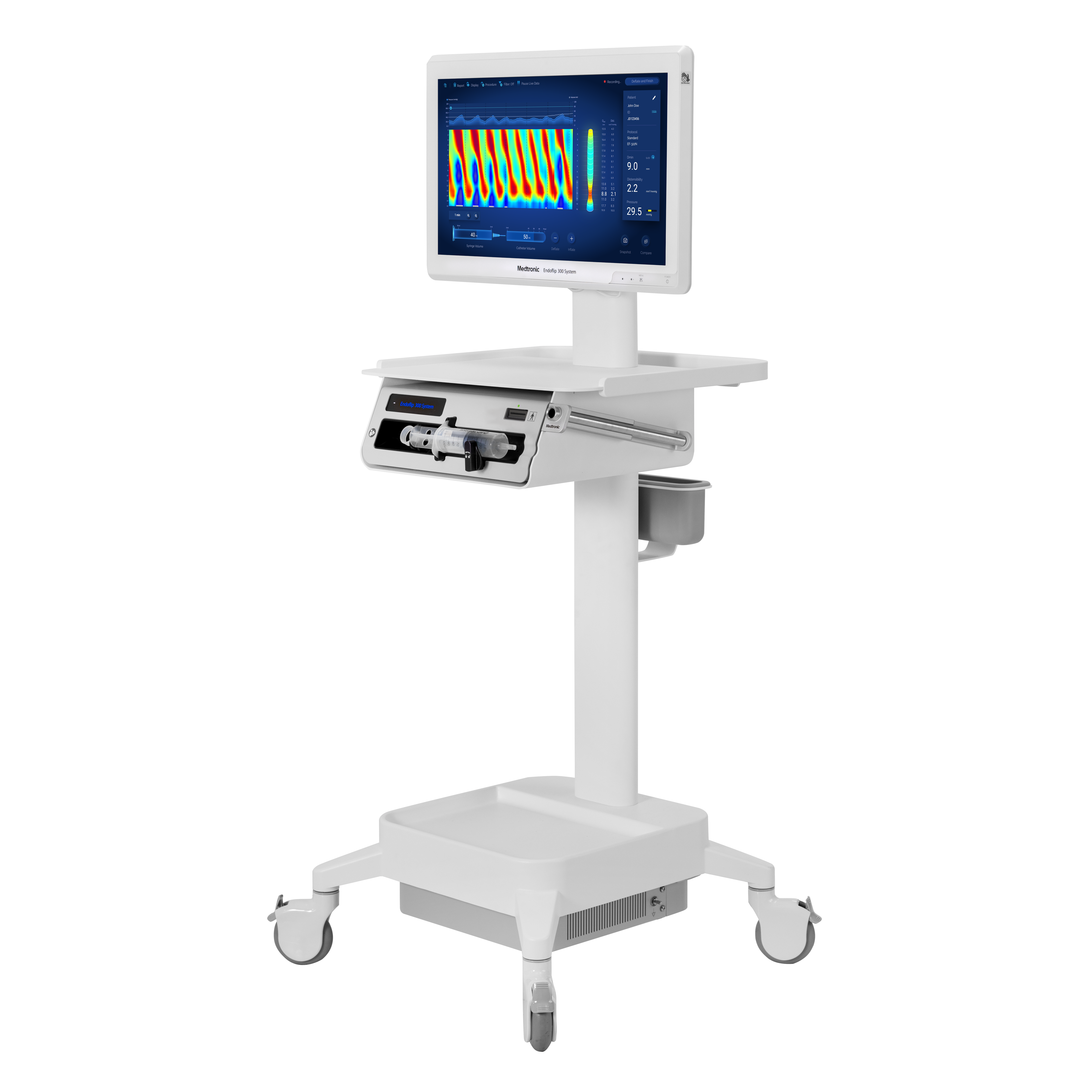Endoflip™ 300 impedance planimetry system
Endoflip™ 300 uses a balloon catheter to display diameter estimates of the measurement area in real-time. It can measure and display diameter estimates at up to 16 points within the balloon.
Endoflip™ 300 helps identify motility disorders by providing real-time pressure and dimension measurements in the esophagus, pylorus, and anal sphincters.
Endoflip™ 300 provides real-time assessment of the lower esophageal sphincter (LES) myotomy during Heller myotomy or per-oral endoscopic myotomy (POEM) procedures.12
Endoflip™ measurement catheter
The Endoflip™ EF-322N and EF-325N measurement catheters are designed for use with the Endoflip™ impedance planimetry system. They have integrated pressure sensors for balloon pressure measurement.
Esoflip™ dilation catheter
The Esoflip™ ES-310 and ES-320 balloon catheters are indicated for use to dilate esophageal strictures due to esophageal surgery, primary gastroesophageal reflux, or radiation therapy.
The Esoflip™ ES-330 balloon catheter is used in a clinical setting to dilate the gastroesophageal junction (EGJ) to treat achalasia.
The Esoflip™ ES-310 catheter is not suitable for diameter measurements and dilation of strictures smaller than 6 mm or greater than 10 mm.
The Esoflip™ ES-320 catheter is not suitable for diameter measurements and dilation of strictures smaller than 8 mm or greater than 20 mm.
The Esoflip™ ES-330 catheter is not suitable for diameter measurements and dilation of strictures smaller than 8 mm or greater than 30 mm.








